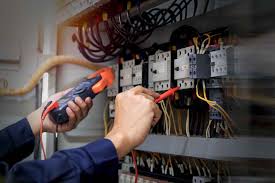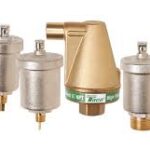Overload Circuit: Protecting Electrical Systems from Damage
Electrical systems are the backbone of modern technology, powering homes, industries, and critical infrastructure. Yet, they are vulnerable to damage caused by excessive current, short circuits, and mechanical faults. An overload circuit is a crucial component in preventing such damage. It protects motors, transformers, and other electrical devices from overheating and failure due to prolonged overcurrent conditions.
This article provides a comprehensive overview of overload circuits, their working principles, types, applications, installation considerations, and the benefits they bring to electrical systems.
What Is an Overload Circuit?
An overload circuit is a protective system designed to detect when electrical current exceeds safe levels for a device or circuit. Unlike short-circuit protection, which reacts instantly to sudden spikes, an overload circuit responds to sustained overcurrent conditions that could cause equipment damage or fire hazards.
Overload circuits are commonly used in:
- Electric motors
- Industrial machinery
- Heating systems
- Power distribution panels
By monitoring and limiting current flow, overload circuits safeguard electrical equipment and improve system reliability.
How an Overload Circuit Works
An overload circuit typically includes a sensing mechanism and a trip device. Here’s a step-by-step explanation of its operation:
- Current Monitoring: The circuit continuously monitors the current flowing through the system.
- Threshold Detection: If the current exceeds the rated capacity of the protected device for a specific duration, the overload sensor activates.
- Trip Mechanism: The overload circuit interrupts the current flow, either by tripping a relay or opening a switch.
- Reset Function: After the fault clears and the system cools down, many overload circuits can be manually or automatically reset.
The delay in response ensures normal startup currents, which are higher than operational currents, do not trigger false trips.
Types of Overload Circuits
1. Thermal Overload Circuit
- Uses a bimetallic strip that bends when heated by excess current.
- The bending action trips the circuit and cuts off power.
- Common in motor protection and household appliances.
2. Magnetic Overload Circuit
- Uses an electromagnetic coil that generates a magnetic field when current exceeds a threshold.
- The magnetic field triggers a mechanical trip.
- Responds faster than thermal overload circuits.
3. Electronic Overload Circuit
- Uses sensors and microcontrollers to monitor current and voltage.
- Can provide adjustable settings, precision trip, and remote monitoring.
- Ideal for modern industrial applications and sensitive equipment.
4. Combination Overload Circuit
- Integrates thermal and magnetic elements for dual protection.
- Thermal handles long-duration overloads, magnetic handles short-term spikes.
- Widely used in industrial motors and heavy machinery.
Applications of Overload Circuits
1. Industrial Motors
Electric motors are highly susceptible to overcurrent, which can cause overheating, insulation damage, and failure. Overload circuits prevent these issues by limiting current and protecting motor windings.
2. HVAC Systems
Heating, ventilation, and air conditioning systems use motors, compressors, and fans that require overload protection to avoid costly downtime and equipment damage.
3. Manufacturing Equipment
Machines such as pumps, conveyor belts, and presses benefit from overload circuits to maintain continuous operation and avoid mechanical failures caused by electrical overloads.
4. Power Distribution Panels
Overload circuits protect transformers, busbars, and electrical panels from excessive current, preventing fires and catastrophic equipment damage.
5. Renewable Energy Systems
Wind turbines, solar inverters, and battery storage systems often include overload circuits to handle fluctuating current and protect sensitive components.
Key Components of an Overload Circuit
An overload circuit generally consists of the following components:
- Current Sensing Element: Detects the flow of electrical current, using either thermal, magnetic, or electronic sensors.
- Trip Mechanism: Opens the circuit when overcurrent is detected, either mechanically or electronically.
- Reset Button or Mechanism: Allows the system to restore operation after the overload is resolved.
- Control Relay or Contactor: Facilitates interruption of the current to the protected device.
- Indicators (Optional): Some circuits include visual or digital indicators to alert users of an overload condition.
These components work together to ensure reliable protection while minimizing unnecessary downtime.
Advantages of Using an Overload Circuit
1. Equipment Protection
Overload circuits prevent overheating, insulation breakdown, and motor burnout, extending the lifespan of electrical devices.
2. Fire Prevention
By interrupting excessive current, overload circuits reduce the risk of fires caused by overheated wires or components.
3. Cost Savings
Preventing equipment damage and reducing maintenance requirements saves businesses and homeowners significant expenses.
4. Operational Reliability
Overload circuits ensure smooth and uninterrupted operation of industrial machinery and electrical systems.
5. Compliance
Many industries require overload protection to meet safety and regulatory standards, such as IEC, UL, and NEC codes.
Installation Considerations for Overload Circuits

1. Proper Sizing
Select an overload circuit based on the device’s full-load current, startup current, and voltage rating. Proper sizing ensures accurate protection without nuisance trips.
2. Environmental Conditions
Consider temperature, humidity, dust, and vibration when selecting an overload circuit. Harsh environments may require industrial-grade or electronic overload protection.
3. Coordination with Other Protective Devices
Overload circuits should be coordinated with fuses, circuit breakers, and protective relays to ensure selective tripping and system reliability.
4. Accessibility
Install overload circuits in locations that are easily accessible for inspection, testing, and maintenance.
5. Compliance and Certification
Use overload circuits that comply with national and international safety standards to guarantee effective protection and legal adherence.
Overload Circuit vs. Short-Circuit Protection
While both protect electrical systems, there are key differences:
| Feature | Overload Circuit | Short-Circuit Protection |
| Response Time | Slower, delayed for sustained current | Instantaneous |
| Function | Protects motors and devices from prolonged overcurrent | Protects wiring and components from spikes or short circuits |
| Reset | Often resettable | Usually requires replacement (fuse) |
| Application | Motors, industrial equipment | All circuits including wiring and electronics |
Overload circuits complement short-circuit protection by providing a broader safety net for electrical systems.
Maintenance of Overload Circuits
- Regular Testing: Test trip mechanisms periodically to ensure proper operation.
- Inspection: Look for signs of wear, corrosion, or overheating.
- Calibration: For adjustable electronic overload circuits, verify trip settings against device ratings.
- Cleanliness: Keep circuits free from dust and moisture to prevent false trips or malfunctions.
- Record Keeping: Track overload events and maintenance activities to anticipate potential equipment issues.
Emerging Trends in Overload Circuit Protection
1. Smart Overload Circuits
Integration with IoT allows real-time monitoring, alerts, and predictive maintenance.
2. Electronic Overload Protection
Electronic circuits offer faster response, programmable thresholds, and remote monitoring for industrial and sensitive applications.
3. Compact and Modular Designs
Smaller, modular overload circuits save space in electrical panels and simplify installation.
4. Energy Efficiency
Advanced designs reduce energy loss during normal operation and optimize system performance.
Conclusion
An overload circuit is a vital component in modern electrical systems, providing protection against sustained overcurrent conditions that can damage motors, transformers, and other equipment. By understanding the types, applications, advantages, and maintenance requirements of overload circuits, engineers, technicians, and homeowners can ensure safe, reliable, and efficient operation of their electrical systems.
From industrial machinery and HVAC systems to renewable energy installations and power distribution networks, overload circuits are indispensable for safeguarding equipment, preventing fires, reducing downtime, and complying with safety standards. Investing in high-quality overload circuits today ensures long-term protection and operational reliability for all electrical systems.





